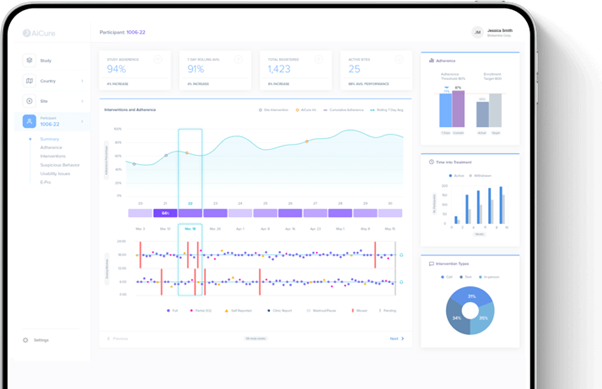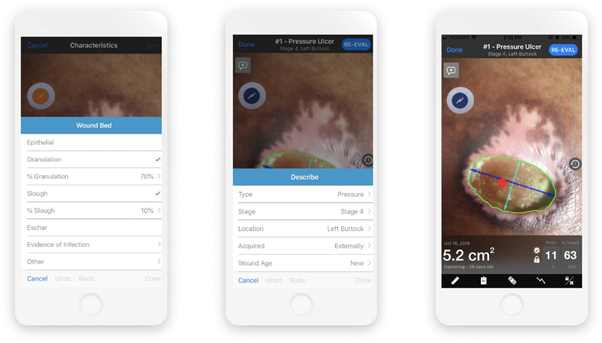According to Global Market Insights, the global mHealth market reached $56 billion in 2020 and is expected to grow by 30% annually until 2030. Today, the development of medical applications is more relevant than ever as people have become more aware of their health, especially during the COVID-19 pandemic.
People use medical digital solutions to monitor their physical activity, sleep quality, blood sugar and oxygen levels, and so on. In 2020, Ipsos conducted a survey among more than 22 thousand respondents in 30 countries and found that 52% are going to play sports and eat healthy, while 44% intend to take serious measures to reduce weight.
In addition to fitness apps, users are interested in solutions that make it possible to remotely consult with physicians. For example, CB Insights revealed that global investment in telehealth grew by 169% year-on-year and stood at $5 billion in 2021. Their interest can be explained by the fact that even residents of developed countries suffer from the unavailability of local doctors.
For example, Canadians have to wait an average of 11 weeks to get an appointment with a practitioner and receive the necessary treatment. Telehealth platforms and similar solutions allow them to contact the required specialist from anywhere in the world at any time and alleviate their condition.
Both patients and medical professionals need healthcare apps and services. For instance, doctors will be able to use wearable data sent by patients to monitor their physical conditions and adjust treatment, if required. There are also a number of digital solutions for physicians and medical institutions that allow them to process and analyze patient data and images (CT and MRI images), maintain patient records, remotely control medical devices, write prescriptions for medicines, and do other things.
Therefore, many software development companies are seeking to offer their effective solutions to the medical industry and win the hearts of consumers. If you are planning to build a healthcare app, the first thing you need to decide is what programming language you will choose. Your product should be easy-to-use, intuitive, and secure, as well as have a nice design and good functionality. That’s why you need to get serious about selecting a programming language for creating your medical solution.
How to choose a programming language for developing healthcare applications?
In fact, there is no universal language for creating medical apps. Your choice should depend on your project, the type of your product (mobile or desktop application), its features, design, platform (iOS, Android, Windows, etc.), your development team, and budget. If you want your application to be cross-platform (i.e. it could be used both on a smartphone and on a PC), it has to be native. Accordingly, you choose a programming language for each platform: Java or Kotlin for Android, Objective-C or Swift for iOS, R or Python for healthcare solutions based on AI and machine learning, and so on.
So, when choosing a programming language, you should take into account the following factors:
Application type
The very first question you should ask yourself is what app are you going to build? Do you want to offer users a mobile app, web app, or firmware? For a web application, it’s better to choose object-oriented languages, such as Java, C#, Python, Ruby, and others. If your solution is aimed at processing a huge amount of patient data, think about Java, Python, and R.
At the present time, many medical products are built on the basis of machine learning algorithms and artificial intelligence. They allow doctors to analyze patient data and predict diseases. These applications are often written in R, Python, Java, C++, and Go. If you plan to work with mobile solutions, use Java or Kotlin for iOS and Objective-C or Swift for Android.
Good community support and tutorials
It’s better to choose a popular language for developing your healthcare application as this will give you access to documentation and a lot of guides. If any problems arise, your development team can always ask a question on a specialized forum, such as GitHub or StackOverflow, and get professional advice. You can also always use various open-source libraries and frameworks that greatly simplify and speed up the development process. It’s worth taking into account that the more popular the language, the more developers will be available in the market, and their services will cost you less than the services of narrow specialists.
Security
Since your solution will deal with personal information, it must be safe. What’s more, healthcare apps must comply with HIPAA regulations that protect patient privacy and their medical records. HIPAA allows companies to share information with their customers in a safe and secure manner as well. C, C++, Python, JavaScript, and PHP are programming languages that perform well in terms of security.
So, let’s see what programming languages fit the above-mentioned criteria.
Top 5 programming languages for creating medical digital solutions
Java
Java is an object-oriented programming language developed by Sun Microsystems in 1995. It is used by 8 million programmers and is running on 7 billion devices. The language is rightfully considered universal as it’s chosen to create various mobile apps, games, scientific developments, supercomputers, and so on.
The main advantage of Java is that it’s a cross-platform language. Java software solutions are converted into byte code, which is then executed by the Java Virtual Machine. It’s a program that processes byte code and passes instructions to the hardware as an interpreter. This means that it’s enough for a developer to write the program code once, and it will work with any hardware platform or operating system.
Java is a safe and reliable language because program execution is completely controlled by the virtual machine. It will block any unauthorized activity, such as unauthorized access to data or connection to another PC. Since Java is a popular language, it has huge community support, good documentation, and many free out-of-the-box solutions.
For example, the Austrian e-Health system is written in Java. It’s a smart card and electronic health record program that checks the insurance status of citizens and facilitates the creation, transfer, and storage of electronic health records. The e-card system provides access to various e-health services like preventive check-ups.
Python
Python is a high-level programming language created by Dutch developer Guido Van Rossum in 1991. It is used to create various products, such as web applications, games, desktop programs, databases, and many others. This language is widely used in the field of machine learning and artificial intelligence. According to TIOBE, it’s the number one language among developers who create solutions for processing large amounts of data.
It’s a simple language with a clear syntax that supports dynamic typing, object-oriented programming paradigms, and imperative programming. Interpretability is one of the strengths of Python. Simply put, programmers don’t need to compile code. They can run it immediately. This feature allows testers to check the solutions faster. Python is compatible with most existing operating systems.
Thanks to these advantages, Python is currently one of the main programming languages for developing healthcare applications. In particular, it is well suited for creating solutions that can predict heart disease, diabetes, pneumonia, and other disorders, diagnose diseases based on images, manage patient data, and so on. This language has a huge number of libraries and a large community as well.
For example, New York-based medical startup AiCure created an AI-based app that helps patients take their medications on time using face, action, and medication recognition. The application can analyze the patient’s condition to determine whether the treatment is working. The product was created in Python using Django frameworks.
R
R was created to work with statistics in 1993. It allows you to collect and clean data, process tables, perform statistical tests and various types of analysis, as well as create graphical reports. This language is great for medical applications that process huge amounts of data and that are based on machine learning algorithms.
It was initially created by scientists from the Department of Statistics at the University of Auckland for internal use but quickly gained popularity among programmers. In 2016, it ranked 18th in the TIOBE rankings, and in 2021 it moved up 10 positions to rank 8th.
R works with most operating systems, including Windows, macOS, Linux, and others. You can apply R to create applications, build different graphs, including interactive ones, as well as edit their elements. It boasts extensive and clear documentation, many free libraries, and community support.
For example, the pharmaceutical giant Merck uses the R programming language for drug testing and clinical trials.
Kotlin
Kotlin is a statically typed programming language created by JetBrains and released in 2016. It is used to build cross-platform mobile apps for Android and iOS, web apps, desktop apps, as well as software for processing Big Data. Although, this programming language is more often used to develop Android applications now.
One of the features of Kotlin is that it’s fully compatible with Java. Java developers will be able to easily switch from Java to Kotlin or use both languages when developing various solutions. Taking into account the fact that there are 8 million Java developers worldwide, you will have no difficulty finding Kotlin programmers who can develop your healthcare application.
Moreover, if you want to convert your Java solution to Kotlin, you won’t run into problems since it is built into Android using Gradle. It’s a tool that allows you to implement new features in Kotlin in an existing mobile app without rewriting other parts of the application that were previously written in Java.
Google, Pinterest, Square, Trello, Slack, Tinder, Airbnb, and other well-known companies use Kotlin to build their products. Keep Kotkin in mind when you choose the programming language for your project.
Swift
Swift is a programming language developed by Apple for building apps for iOS, macOS, watchOS, and tvOS. It’s a structured, clear, and logical language that is easy to learn. The developers created Swift in such a way that the system would find errors and make corrections at the development stage. Thanks to this feature, Swift is considered a secure language that protects against unauthorized access to areas of memory that are not involved in the software.
Swift has a convenient Xcode integrated development environment that was made by Apple in order to develop software for iOS and macOS. You can also use the official documentation and numerous libraries. The language is characterized by high performance. It’s faster than Objective-C by almost 2.6 times and outperforms Python 2.7 by almost 8.4 times. Another advantage of Swift is its backward integration with Objective-C. This means that projects written in Objective-C can be easily converted to Swift.
For example, Swift Medical developed a Skin and Wound app that allows patients to send images of their wounds to doctors to get the required treatment. Medical professionals, in turn, will be able to monitor the healing process and make adjustments to the treatment, if necessary. The app is written in Swift.
Bottom Line
So, healthcare app development is a promising area nowadays. However, if you want to bring your solution to this market and climb to success, you need to consider many nuances and prepare well for the development process, including the choice of programming language. We’ve described 5 programming languages that can be used to create an effective product.
If you have any questions, don’t hesitate to contact us. The Elinext specialists are ready to answer your questions and share their extensive experience in creating effective solutions for the healthcare industry.











